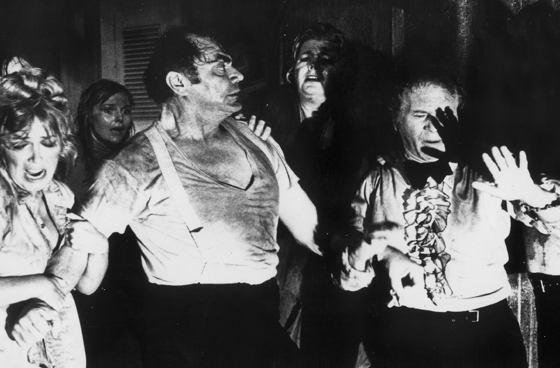Susan Sontag looks at what she calls a sub-genre of science fiction films from the 1950s to the time the essay was written in 1965. Sontag argues that these science fiction films are about the ‘aesthetics of destruction, with the peculiar beauties to be found in wreaking havoc, making a mess. And it is in the imagery of destruction that the core of a good science fiction lies.’ Sontag goes on to argue that these images and scenarios of destruction serve two complimentary functions. First, they work to explore the ‘deepest anxieties about contemporary experience’. Second, they are ‘strongly moralistic’ fables that in their representations and resolutions provide a ‘utopian fantasy’ space where all problems are easily resolved. As a consequence, Sontag concludes, ‘there is absolutely no social criticism, of even the most implicit kind, in science fiction films’.
Michael Ryan and Douglas Kellner’s position on this is more complex. They argue that there are two types of dystopian/technophobic text: there are those texts that work to a conservative and essentialist paradigm and which often involve a terrifying anti-humanist technology being counter-posed against an idealistic ‘natural’; and there are those texts that project liberal-critical viewpoints around technology and nature and which consequently challenge the conservative binary oppositions that structure such relationships. Ryan and Kellner argue that Blade Runner works in this way: ‘the film deconstructs the opposites – human/technology, reason/feeling, culture/nature – that underwrite the conservative fear of technology by refusing to privilege one pole of the dichotomy over another’. For Ryan and Kellner, ‘dystopias or negative utopias’ cluster together in the 1970s and 1980s because there is a particular ‘crisis of confidence’ in this period of American society.
J. P. Telotte examines the significance of what he calls the ‘doubling process’ in science fiction. This ‘alluring and potentially destructive’ desire to reproduce oneself ‘seems to promise a reduction of man to no more than artifice’ but which nonetheless holds ‘man’ in its spell because of the promise of ‘bringing us back to ourselves, making us at home with the self and the natural world in spite of ourselves’. This doubling process, then, is on the one hand a death drive, ‘a desire for oblivion’, the snuffing out of humanness, but on the other it is a necessary quest to find oneself in the contradictions that life (and death) brings to the human world.
Linda Ruth Williams suggests that dystopian scenarios are always bound up with utopian sentiments, and as a consequence dystopia needs utopia and vice versa to be given definition and meaning. In a textual, contextual and comparative analysis of Brazil and Nineteen Eighty-Four, Williams suggests that both films’ dystopian vision is interrupted by the utopian ‘vision of a woman’ who functions as a ‘spectacle of interruption, an escape from the dark dystopian terrain. In both films it is the woman’s face which functions as the utopic image, freezing ‘the flow of action’’.

